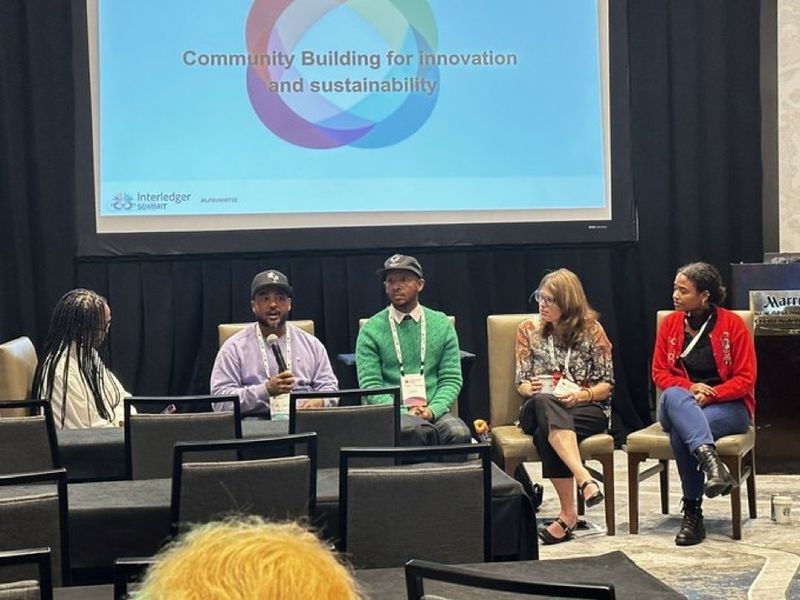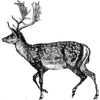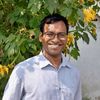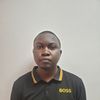As in many creative communities, one of the things our community often struggles with is the outreach and community building side of their projects. So much focus goes into the build, that by the time it’s done, they are either out of funds, energy, time, or at a loss on where to start with doing outreach and community building around what they’ve created.
The reality is that we need both the build and outreach / community building around that build to be successful in reaching broader communities with everything that we’ve been creating in the Interledger ecosystem. We all need to be a part of that outreach and community building, as we are all connected to different communities that trust us.
The Field of Dreams notion of “build it and they will come” is an illusion. Rather it should be “build it, go out and find your desired niche community, engage that community, and then they will come.”
Throughout my Ambassadorship, I have been strategising on this Outreach and Community Building piece in a few different ways.
Talks / Panels
One approach was addressing this subject head on at the 2022 Summit with a panel on Community Building for Innovation and Sustainability with Ayesha, Lawil, Tabi Bonney of Itadi Coffee and Skincare, and Karl Carter of Snake Nation.
Ayesha and Julaire also hosted a wonderful Open Payment Huddle on Building a Niche Audience with Imani K Brown and Rashon A. Massey, prior to the 2022 Summit, which you can watch by clicking on the link above.
Community Idea Sharing
In continuing these dialogues for past, current, and future grantees and community members, I think we would also benefit from a space where we as a community can share ideas that are working well for us in our outreach and community building efforts, share resources, and ask each other questions and for advice on. While certainly the Interledger Community Forem provides such a space, I think having a less formal and involved, quick question space for these sorts of conversations may be beneficial. As such, I have set up an Outreach and Community Building Channel on the Interledger Slack geared towards such conversations. As I know there are others in our community who have been tackling this, including @gfam, @micopeia, Free Music Archive, Elementari and others, I do hope you will consider sharing what is working for you there.
Other ideas for Outreach and Community Building that have come up throughout my Ambassadorship include:
1) Digital Course Building
A wise woman in our community, if memory serves me correctly - Maria Bustillos, suggested that I start building out digital courses on Web Monetization on more mainstream course sharing sites like Udemy, Coursera, Skillshare … etc. While this was not something I had time to do during my Ambassadorship, I think this is a great idea for when there are new pathways for Web Monetizing digital assets and other course materials around the Interledger Protocol.
2) Wikipedia Project
Wikipedia helps improve discoverability on the internet, adding perceived credibility to organizations, movements, technologies, and individuals with mainstream internet users. Yet in searching Wikipedia to see what and who in the Interledger community are represented there, you will find very few entries involving aspects of our Interledger community. Added to this there is also a recognized gender bias and racial bias on Wikipedia. Wikipedia is trying to address these biases through WikiProjects and events like Wikimania, hosting edit-a-thons to build more diverse representation across Wikipedia. As I suggested in an earlier post this year, I would love to take action as a community to improve upon the diverse representation across Wikipedia and build up our own community there by beginning a WikiProject and hosting edit-a-thons of our own.
3) Sharing Conference Speaking Opportunities
@muraldouglas_62 gave me the idea, through a query to Chris, to begin building out a spreadsheet of conferences and festivals that people in our community might wish to be aware of to pitch sessions to on things related to Interledger. Here’s a copy of the editable conference spreadsheet for the broader Interledger Community to use and add to.
While not on the topic of outreach and community building, I also created editable spreadsheet of Surveys Conducted by our Community to help Nicole Kang out. Sharing it here, in case it is helpful to others among you.
4) Hosting Events
I was honoured to have @vineel include me in his strategising around creating some microgrants to help members of our community to host events to further share the Interledger Protocol with their communities. I think this is a great idea that he has been building.
5) Mastodon
As we’ve seen the rise of a number of concerning elements on Twitter over the past year, I, along with @jeremiahlee, began advocating for the Interledger Foundation to join Mastodon. Aside from both Jeremiah’s and my concerns over what is happening on Twitter (now X), Mastodon makes sense for Interledger as it has been built to address a number of similar concerns around decentralisation and the exploitation of users and their data that members of the Interledger Community have expressed over the years. As such Mastodon has attracted a community that shares similar values to the Interledger community around open source, inclusion and accessibility. Mastodon is built on open source technology and has been attracting an early adopter community, interested in social good movements. This is a platform rich in the technologists, educators, and media that our community wishes to reach. In fact, a number of organisations that Interledger has been involved with, along with those we’ve been speaking to are already there, including Mozilla, Creative Commons, and the OEGlobal community.
Jeremiah has launched an Interledger Mastodon Instance this summer and talked about some of what he’s been working on around Mastodon in June’s Open Payment Huddle.
September’s Open Payment Huddle will continue this conversation on growing within the Fediverse with Jeremiah, @benjaminbellamy and @yassinedoghri (of Castopod fame), and myself.
My Outreach and Community Building Focus
In terms of my own Outreach and Community Building throughout this Ambassadorship, my main goal has been to do more outreach to Indigenous and Disabilities Communities.
Why the Indigenous and Disabilities Communities?
Both Indigenous and Disabilities communities have been met historically with oppression and damaging stereotypes that members of these communities continue to work to change today. Added to this, both the indigenous and disabilities communities often find themselves in secluded and remote situations without the same access to work opportunities. In the case of indigenous communities this may be due to wishing to live on their traditional lands, dealing with disabilities resulting from genocide, having loved ones that need caring for at home, or discrimination. In the case of people with disabilities, this may be due to being limited in the work that they can accept as a result of their disabilities and the accessibility of the work to them, their degree of mobility, their ability to work regular days outside the home, and how others perceive their abilities and value as a result of their disabilities. This can place both of these communities in financially vulnerable situations. Being able to earn through digital avenues presents new possibilities for both of these communities, particularly for those whose available working hours are limited.
In exploring the statistics around this, the 2020 Canadian National Advisory Council Report on Poverty shows both Indigenous people and people with disabilities among those at greatest risk of poverty in Canada.
This is echoed by a 2020 International Labour Organization report that found the indigenous peoples are still more likely to be poor and face particular hardships in the world of work. According to Amnesty International, Indigenous peoples make 15% of the world’s extreme poor, due to discrimination.
The International Labour Organization also found that, “unemployment among the persons with disabilities is as high as 80 per cent in some countries. Often employers assume that persons with disabilities are unable to work.” A 2003 study by Rutgers University found that “one-third of the US employers surveyed said that persons with disabilities cannot effectively perform the required job tasks. The second most common reason given for not hiring persons with disabilities was the fear of costly special facilities.” (Dixon, Kruse, Van Horn, 2003) In this study conducted by the Western Michigan University, it was found that “The economic self-sufficiency and independence of people with disabilities depend largely on their capacity to maintain financial stability. As a group, such individuals have among the highest poverty rates, lowest educational levels, lowest average incomes, and highest out-of-pocket expenses of all population groups. Any substantial shock to the financial stability of people with disabilities can threaten their access to necessary housing, nutrition, medical care, and other resources, the absence of which may result in further vulnerability and possible poverty.” The World Bank states that “Barriers to full social and economic inclusion of persons with disabilities include inaccessible physical environments and transportation, the unavailability of assistive devices and technologies, non-adapted means of communication, gaps in service delivery, and discriminatory prejudice and stigma in society.” In contrast to ableist fears and stigmas, this US study by Darlene Unger shows that “Companies report that employees with disabilities have better retention rates, reducing the high cost of turnover.” This is further supported by other American surveys that reveal that after one year of employment, the retention rate of persons with disabilities is 85 per cent. Added to this the US 1990 national census revealed that persons with disabilities have a higher rate of self-employment and small business experience (12.2 per cent) than persons without disabilities (7.8 per cent).
The Interledger Protocol and Web Monetization Standard presents new opportunities for both of these communities to earn in a way that could bring hope, new growth, and innovative ideas from people who are used to having to adapt and problem solve to survive. But in order to do that, they need to be introduced to and to learn about the technologies, community, and opportunities in a way that feels safe to them from people that they trust.
Outreach to Indigenous and Disabilities Communities
Aside from attending events and speaking with individuals in these two communities directly about Interledger, I’ve also been reaching out to the broader indigenous and disabilities communities by sharing the various Interledger grants available in digital niche communities designed for each of these groups. With this (and by now what must seem like an obsession for spreadsheets), I have been creating spreadsheets of the community groups and forums where these communities can be more broadly reached. If these or the open education or media community spreadsheets I have been creating would be of interest or use to any of you, please let me know, and I can create copies for you.
Additionally, I have been brainstorming on microgrants for these two communities to help introduce them to and immerse them in the Interledger technologies.
Initial Microgrant Idea Around the Web Monetization Standard
Initially, I was going to create two committees - one with members of indigenous communities and one with members of disabilities communities to help create two different microgrants for their respective communities. The general idea for each of these microgrants was to invite members of each community to create and Web Monetize digital assets, and then host tipping galleries / parties to spotlight the Web Monetized assets that were created as a part of the microgrants.
The goals being to:
- introduce the Web Monetization Standard to these communities,
- encourage them to begin to Web Monetize their digital assets, and
- invite their communities to celebrate their Web Monetized digital assets, while also introducing them to the Web Monetization Standard.
While I wasn’t able to follow through with these microgrants, due to Coil closing, I do still think this is a good idea, when there are new pathways to Web Monetizing your digital assets.
2023 Summit Microgrants
As my initial idea for microgrants wouldn’t work, Chris suggested creating a microgrant to bring a small cohort of people from indigenous and disabilities communities to the Summit to introduce them to the ideas, technology, and community in the Interledger ecosystem. I love this idea, which we are just about to launch from my Ambassador slush funds and the remainder of Lawil’s Ambassador slush fund.
If you have a suggestion of a good candidate for this microgrant, please let me know. We should be able to bring 5 people on this microgrant.
Creating a More Accessible Community
With building our community out further into disabilities communities, there are new opportunities for our community to learn as a whole about accessibility. While there are definite best practices with digital accessibility, it is important to remember that there is no one path, fix all solution.
As an example, one of my colleagues in my Masters and I both have post concussion syndrome, which has been problematic for us in reading academic papers online. This aggravated both of our post concussion syndrome symptoms. For the other student, screen readers were a solution to this issue. For me, screen readers did not work, and in fact further aggravated my symptoms. Instead for me the solution was natural voice readings of the materials. This is much of what has inspired Lori Yearwood and I to begin to have the authors on our digital magazines record audio readings of their articles.
As triggers for an individual’s symptoms getting aggravated and solutions for accessibility are particular to the individual, it is important to create an environment in which people can share their needs for a healthy, accessible work environment, when they feel they need to. With that, it is also important to allow them to do that in a way that feels safe for them and respect what they are sharing with you.
To give you an idea of the importance of this, I know for me, with my post car accident disabilities, this takes trust in sharing, and if I am sharing what I require it is because I need to, as my symptoms are being triggered. I have to constantly work at managing my pain to be able to work and live life in general, and I have a team of medical professionals that help me with that. For me part of that is ensuring I am in healthy work environments in which my needs are respected. If my requests for what I need are not met in a positive way, my symptoms get out of control and aggravated for months, further limiting how much I am able to do. That is not something anyone deserves.
People with disabilities can be some of the most loyal advocates, allies and employees for these reasons, if you create a healthy work environment for them, as they understand the value and importance of that.
For these reasons, I love that there were talks like this one that Erin Brown gave on The 5Ps of Diversity, Equity, and Inclusion (DEI) at the 2022 Summit:
I also greatly appreciated Sharon Wang for inviting me to take part in her panel with Victoria Coker of Black Web Fest, Andrés Arauz of People's Clearinghouse and Karl Carter of Snake Nation on Broadening Financial Inclusion…what does that mean? at the 2022 Summit.
Other Outreach
Other outreach I have been doing over my Ambassadorship includes to natural fit communities with a focus on building digital assets, like the open education communities (such as OEGlobal) and media and journalism communities (like TMAC). Along with making introductions and connections into other education programs, like the Master of Digital Media Program at the Centre for Digital Media.
I also helped Kokayi in his goal to reach out to more people in the Middle East, including Lindsay Margenau at the Canadian Consulate in Dubai, Fady Ramzy at the American University in Cairo, and Raghda El Halawany with MasterPeace in Egypt. I need to particularly thank Lindsay, as she took the time to talk to Chris and Ginny to explain how business works in Dubai, and to share her thoughts on pathways into that market.
Closing Thoughts
I love seeing how our community builds together and supports one another. In what I’ve shared here, I think there are a lot more opportunities for doing that and to helping to share what our community is building more broadly, from:
- building mini-courses on elements of our ecosystem on mainstream learning platforms,
- sharing ideas and troubleshooting with one another over Slack discussions,
- building our community out on wikipedia,
- sharing conference speaking opportunities,
- hosting events,
- building in the Fediverse,
- establishing microgrants and hosting tipping parties,
- sharing niche community spaces for outreach,
- to further building our community to be more inclusive and accessible to people with disabilities with building upon our community’s knowledge of what that means and how to be truly accessible.
Your Thoughts and Ideas?
I would love to hear your thoughts on other ways of further improving upon our outreach and community building in the comments below.
Thanks for reading and joining me on this series of posts exploring what I’ve been working on throughout my Ambassadorship.













Top comments (10)
Thanks for this post, Erica. I strongly support the proposal of building out a course on Web Monetization on a platform like Udemy or Coursera, or even LinkedIn Learning. As you acknowledge, the timing isn't right at the moment given the lack of accessible wallets, but I think this is a great way to reach a new audience about the potential of what Interledger offers.
You mentioned Wikipedia as well. I was surprised to search just now and realise we do not have a Wikipedia page for the Interledger Protocol. We should change that. I'd love to join you in taking action here -- if you set up a Wiki-editing hack-a-thon, I'm in :-)
Oh yes, LinkedIn Learning would be a smart choice, too. Thanks @ferdeline.
Yeah, I was surprised by that too when I realized that there is nothing on the Interledger Protocol on LinkedIn and very little of our community there at all. I've pitched a Wiki-editing hack-a-thon at the Summit, so we shall see if it gets accepted. Either which way, glad to have you in whenever that happens.
Hi Ayden! I don't disagree that having courses on Udemy, Coursera, LinkedIn Learning, PluralSight, etc for Web Monetization would be extremely useful.
Not sure if you're aware, but there is a course on FreeCodeCamp :
youtube.com/watch?v=XwzcrhhyDkc
I'm sure it's totally out of date now, but I'm sure the FreeCodeCamp team could update it when all the pieces are in place.
Thanks for sharing that, @gfam! I definitely see the value in videos as a quick resource, but I have to echo the sentiment from Erica that there's a big difference between an isolated video and a comprehensive course that offers a structured and progressive learning path on Web Monetization, especially for non-technical audiences.
Additionally, there's the matter of network effects. A course on LinkedIn Learning, for instance, is vetted, curated, and can be integrated into one's professional profile. I would argue this legitimizes the learning process and makes the skills gained more transparent to employers and peers. And because these platforms have built-in audiences, they can amplify the reach of the content to communities that are not aware Web Monetization exists and have not actively sought out a video tutorial.
That said, I'm all for a blend of resources, and the FreeCodeCamp video you shared can certainly be a great starting point for many. My hope is that as Web Monetization gains traction, we'll also see in-depth courses sprout up on major learning platforms.
Thanks Ayden! I don't have any experience with LinkedIn Learning, so I wasn't aware that it could be integrated into people's professional profiles. That is super clever and could definitely be a big boost to introducing Web Monetization to my network (for example). Sounds like there is a lot of scope here, great suggestion.
That is more of a video, @gfam, rather than a course. Which is great, but courses tend to offer a more involved experience, that is broken up into parts, as oppose to a singular video.
That makes sense... I didn't really appreciate the nuance, but of course you're right. Thanks Erica!
Amazing work here Erica!
gFam is definitely interested in building out blog posts and tutorials on the various projects within the Web Monetization/Interledger ecosystem to help the community find everything that might be useful to them.... as well as supporting the various communities surrounding each of those projects. There is a ton of work to do here but it all seems really exciting!
I suspected you would be interested, and am thrilled that you are. Thanks Adam.
Hey everyone,
It's Ahmad here, and I just wanted to chime in after reading through this post. The idea of introducing the Web Monetization Standard to indigenous and disabilities communities is genuinely commendable. In a digital age where everyone is racing to get ahead, it's refreshing to see initiatives that aim to uplift and include marginalized communities.
I also appreciate the pivot in focus after the initial idea couldn't materialize due to Coil's closure. The 2023 Summit Microgrants are a fantastic approach. By introducing a small cohort from these communities to the wider Interledger ecosystem, we're not just providing an opportunity but also fostering cross-cultural and interdisciplinary collaboration. If anyone springs to mind as a suitable candidate, I'll certainly pass their details along.
And on the note of creating a more accessible community, this couldn't be more important. As someone who's worked in various professional settings, I can attest to the fact that there's a vast difference between workplaces that simply comply with accessibility standards and those that genuinely strive to understand and meet the unique needs of every individual. Your personal account serves as a poignant reminder of the importance of the latter.
Erin Brown's talk on DEI was a highlight for me too at the 2022 Summit. True inclusivity isn't just about numbers or ticking boxes; it's about creating spaces where everyone feels seen, valued, and empowered.
GB WhatsApp APK
Download ThopTV APK
Thanks for sharing these initiatives and thoughts. I'm excited to see where this goes, and how we can all contribute to a more inclusive digital ecosystem.